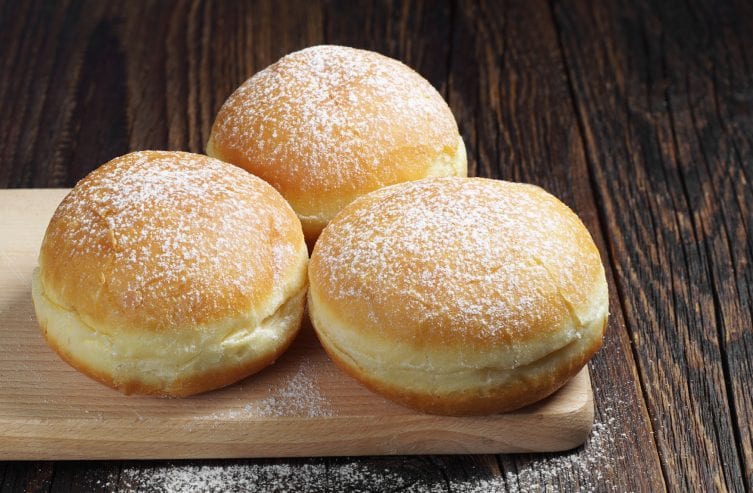It’s National Donut Day, and you don’t need a German refrigerator maker to explain to you what a donut is. Over in Germany, American donuts are popular. A more traditional variety doesn’t have the iconic hole usually associated with the delicious pastry. It comes with a surprise though! Say hello to the Berliner.

The Berliner is Germany’s variant of the donut. Don’t be fooled by its boring exterior of fried yeast dough and powdered sugar or icing. Inside a surprise awaits! The Berliner is filled with jam, marmalade, custard or chocolate. An adults only version uses advocaat, a Dutch custard-like alcoholic beverage.
How exactly the Berliner came about is not 100% clear, but legend has it that in 1756 a baker invented the fried pastry in Berlin out of gratitude. Despite being deemed unfit, he was allowed to sign up to Frederick the Great’s military service as a mobile baker. He shaped little dough balls that were to resemble cannon balls. As he didn’t have an oven to bake them, he fried them. His original recipe probably didn’t include the now customary fillings.
The Berlin Pancake
He called his creation Pfannkuchen. They became known as Berliner Pfannkuchen when they spread across Germany and parts of Europe in the 19th century. Over time, this was shortened to Berliner. Germany wouldn’t be Germany without being delightfully confusing though: People will look at you weird if you don’t order them as Krapfen in Southern Germany. If you want to get one at Frankfurt Airport, you have to ask for a Kräppel. Berliners are ubiquitous in Germany and available year round, but in some regions popularity skyrockets during Mardi Gras.
Around the world local names for the pastry usually include some reference to the German capital’s name. That they are from Germany is undisputed: In Turkey, they are called Alman Pastası (German Pie). In North America “jelly donut” is the most common name, but in Ontario (Canada) as well as parts of the Midwest and the West of the US they may be referred to as “Bismarks” or “Bismarcks”. This is a direct reference to 19th century German chancellor Otto von Bismarck.
Kennedy’s Famous Speech
A persistent linguistic urban legend is that JFK, by adding the word “ein”, accidentally said “I am a jelly donut” instead of “I am from Berlin”, in front of thousands of amused Berliners. The ein doesn’t change the meaning this dramatically and his usage of the indefinite article is grammatically correct. As mentioned above, people in Berlin call this pastry Pfannkuchen (which are pancakes like you know them elsewhere in Germany). That there was any misunderstanding about what he intended to say is highly unlikely.